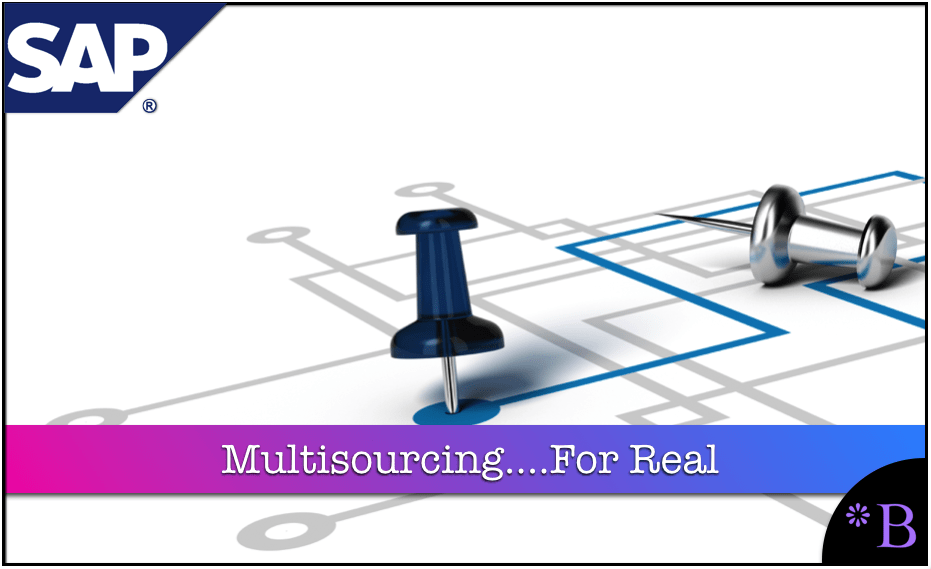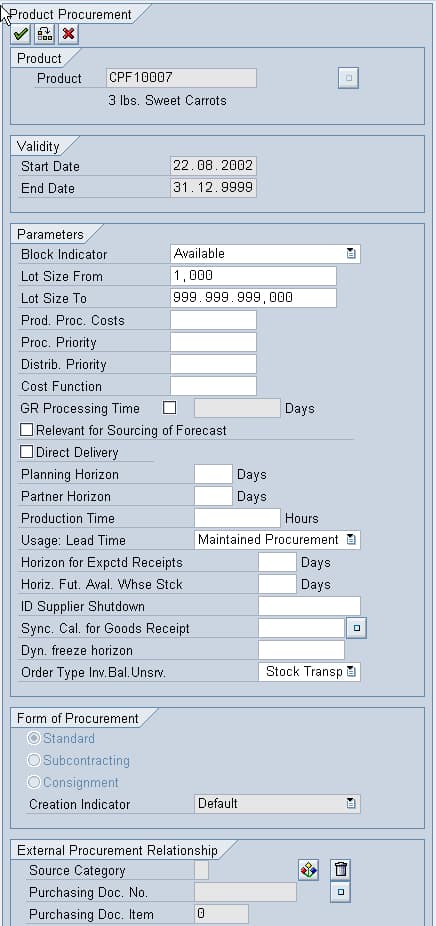Is Multi Sourcing Supported with CTM or even SNP?
Executive Summary
- Multisourcing is how a planning system can compare and choose from multiple sources of supply.
- This functionality is supposedly supported by SAP SNP when the optimizer is used. Other important areas to control are priorities and quota arrangements.

Introduction
Multisourcing is the ability of a supply planning system to choose between alternate sources of supply intelligently. One common reason for multi-sourcing is when one location is the primary location but cannot handle the order’s capacity. The supply planning system would move to a second or even third location to satisfy the demand. Another reason can be to spread, by rough percentages, the total demand among various supply sources. Multisourcing is a common requirement that drives companies to use the SNP optimizer.
However, while many companies attempt multi-sourcing in the SNP optimizer, as I explain in this article, very few continue to use it after it is initially activated and tested.
Multi-Sourcing in CTM
I recently came across the requirement for multi-sourcing in CTM. I was somewhat surprised by this as I had never heard of multi-sourcing and CTM used in the same context before. In fact, a search for CTM and multisourcing and CTM and “multi-sourcing” in the SAP community network provided no results. However, this is more an issue of terminology. This is because CTM has two methods for picking among different sources of supply.
Multi-Sourcing Versus Alternate Resources / PPMs / PDSs
In addition to picking from different sources, CTM can choose various alternative resources, both within a location and transportation resources. Resources are selected based upon a priority. So CTM is allowed to switch to a secondary resource/PPM/PDS if the first one is consumed. However, that is a selection of resources within one location. If two production lines make the same product in two different factories, CTM cannot switch to a different factory and change the supply source based upon a resource becoming consumed in the factory with the resource set to the top priority.
Priorities and Quota Arrangements
The requirement I have been investigating connects to two methods to enable multi-sourcing: priorities and the second being quota arrangements. Let’s take a look at each of these and see if they allow multisourcing.
Quota Arrangements
Quota arrangements allow a company to set the percentage of supply shipped from a specific location. Therefore if location A is supplied by location B and C, B can be configured to provide 50% of the quantity of product ABC, and C can be set up in the quota to satisfy the other 50%. That is in the documentation. As I have described in this article, the quota arrangement functionality seems larger in print than what is actually in the quota arrangement configuration screen.
Priorities on Transportation Lanes
There are two priorities in the transportation lane. One is the Procurement Priority, and the other is the Distribution Priority. These are both in the product-specific transportation lane view. These can be seen in the screenshot below, about halfway down:  Procurement priorities can be sent on transportation lanes. This priority is used to choose among alternative sources of supply. The transportation lane is described in full detail in this article.
Procurement priorities can be sent on transportation lanes. This priority is used to choose among alternative sources of supply. The transportation lane is described in full detail in this article.
The Procurement Priority
This is used to determine the sequence of source locations during deployment. This is used both by the optimizer and by CTM and not the SNP heuristic. However, it is also used for sourcing, which is during the network supply run. The priority SAP Help has the following to say on how the procurement priority is treated.
“If you have specified the In-House Production procurement type in the location product master, the system considers the procurement priority in the PPM or in the PDS. If you have specified External Procurement as the procurement type, the system considers the procurement priority in the transportation lane. With procurement type In-House Production or External Procurement, the system compares the procurement priority from the transportation lane with the procurement priority in the PPM or PDS. The source of supply with the lower value for the procurement priority has priority over the source of supply with the higher value. The highest procurement priority is the value 0.”
Therefore the priority can be either the transportation lane or the PPM/PDS – but not both.
- This means that priorities do not provide the Holy Grail of multi-sourcing. (The SNP cost optimizer would theoretically provide this, but as multi-sourcing has proven to be impractical in SNP, I will only agree that the SNP optimizer probably provides it.)
- This does not mean that PPMs/PDSs can be alternatively selected between locations. This is called multi-plant planning and is not functionality available in APO, which you can learn about here, or you can see my book on this topic for more details.
Therefore, a priority controlled source of supply systems means that either a location/transportation lane can have a priority assigned to it, meaning that one location can come online if the demand cannot be satisfied from the primary location. Alternate PPM/PDS can be selected if the primary cannot satisfy demand.
Distribution Priority
The distribution priority interacts with the Fair Share Rule and determines where deployment requirements are processed when the Fair Share Rule D (Proportional Demands Based upon Priority) is set. Therefore, it has nothing to do with CTM but instead is related to the deployment heuristic.
More on Priorities Verus Quota Arrangements
Supply Chain Management with SAP APO has the following quotes on this functionality.
“CTM switches to alternative sources with a lower priority in case of capacity or material constraint.”
This is a critical topic because it can sometimes confuse how material constraints change or affect the plan. When capacity constraints are used, CTM will not produce an item when there is no capacity. On the other hand, material constraints can move a production order to a different resource or alternative resource. However, a material constraint will not prevent the scheduling of a production order.
“For distribution planning the inbound quota arrangement are the relevant ones. (outbound quota arrangements are used for deployment). Quota arrangements are maintained not only per location, but per means of transport as well. If quota arrangements are maintained, priorities are ignored.”
Therefore, while it may not make sense to apply both priorities and quotas to transportation lanes, as quotas will always supersede priorities – in fact, both can be applied without issue. For instance, quota arrangement may be selectively applied for a specific time of year. At other times the quota arrangement is not applied, and the priority controls the flow.
Alternatively, because priorities are set on the transportation lane and quota arrangements are set at the product and location combination, priorities can be set at the lane, which applies to products with no quota. In that case, priorities would apply for all products without a quota arrangement.
Which is the Top Priority: On-Time Delivery, Quota Arrangement, or Priority?
While the quota arrangements and priorities can be set, CTM will first attempt to fulfill the demand on time. If this can be done, and a quota arrangement or priority is respected, it will consider. However, it will not take them into account if it means a late delivery.
Conclusion
CTM can leverage the quota arrangement and the priority system in APO to meet multiple sources of supply requirement, but it is not multi-sourcing. Multisourcing is only theoretically possible in the SNP cost optimizer — yet I have yet to see it implemented and kept “on” at any client. So as a practical matter, multi-sourcing does not exist in APO — although this will not stop SAP sales from claiming that it is “a standard functionality.”
References
https://scn.sap.com/thread/465207
https://help.sap.com/saphelp_scm50/helpdata/en/99/7a8e9deb08d648872bc65e720c6337/content.htm
https://books.google.ca/books?id=5CA3y7_LY2MC&pg=PA215&lpg=PA215&dq=multisourcing+ctm&source=bl&ots=xvS1mgEs9S&sig=SVsCjunq_NZMVuUnfWMUo6-hCVE&hl=en&sa=X&ei=X932T73lCcLWqgHouqiLCQ&redir_esc=y#v=onepage&q=multisourcing%20ctm&f=false